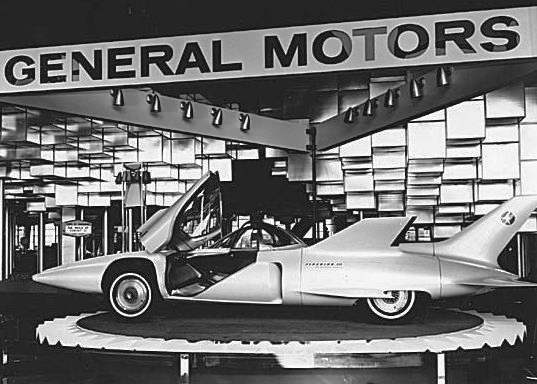...what will be different in the car business?
That would be 2018, for purposes of model years.
Will there be a Ford Motor Company? A Chrysler, LLC.? Will Daimler and BMW have merged?
Will the Suburban be the size of a P T Cruiser and will the environmentalists be concerned about global dampening, due to all of the water vapor emitted by hydrogen-powered fuel cell vehicles?
Will General Motors have become a dominant world-wide auto manufacturer or will the Chinese and Indians have taken over the global automotive market? Or both?
It is customary to predict the future in anticipation of New Year’s Day. However, it may not be premature to attempt it a month or so early, given the year’s automotive developments.
The market for Chinese-produced vehicles increased 22% this year. GM, Ford, & Chrysler, albeit at enormous expense, negotiated labor contracts materially different from the “more, more, more” labor contracts of the past fifty years. The politicians’ war on the car continues unabated, both Schwarzenegger and Clinton attempting to impose fuel economy standards on carmakers which would lead to a vastly different life-style for the western two-thirds of America.
And, the carmakers have become enraptured by “alternative fuels,” none more than hydrogen. Deceptive though it is, Honda’s even taken to advertising their pie-in-the-sky fuel cell vehicle on television, perhaps because they still don’t have anything really interesting in the showrooms.
So, what’ll it be like in ten years? Will the Volt be in every other garage? Will there be 200 mph Mustangs?
Currently, things are very different than they have been for the past twenty years. The change is remarkable, but difficult to fully appreciate because we are all part of it. History is hard to perceive as it is occurring.
There are, however, a few basics that might help see the future as it might turn out to be. Of course, the automakers all are trying to see the same future, and what you’re reading is free. On the theory that you get what you pay for, you’ve been forwarned.
That said,
The future of the car is all about price.
For a very long time, a significant component of the car’s role in society has been its prestige value. People chose to use objects to make statements, and companies which have figured out a way to make their product a means of communicating status and prestige have, for the most part, prospered. It’s not just been cars. Rollex watches to not tell time better than Timex watches.
That will not change.
Governing elements always seek regimentation. The nature of government seeks to control, not merely behavior, but values. Second only to firearms, automobiles endanger the governing class, because they are a means for the individual to exercise freedom. The old Goodwrench line, “it’s not just your car, it’s your freedom,” was exactly correct. The most environmentally correct want a car for that very reason. They drive a Prius. It gives them mobility and it gives them prestige with their peer group. Just like the Caddy did for the sugar daddy of the fifties.
Governing elements will not change, either. But, they’re not likely to win, long-term. Ralph Nader and the insurance industry – GEICO chief among them – came along and squelched the muscle car in the late ‘60’s. But the new ZR1 Corvette will have 650 hp. In 1955, they named the Chrysler “300” after it’s horsepower output, measured at the crankshaft without accessory drives. The ZR1 does it at the axle, with accessory drives, running on lower octane fuel. In 1955 terms, that’s close to 1000 hp in a car weighing about 2/5ths as much as the hottest car in the country, maybe the world. Ralph Nader, in contrast, has become a marginal joke in presidential election years.
So, the desire for power will survive, as well. So, too, will those who feed that desire.
But, one thing is very likely to change, and the beginnings of that trend are already visible.
The car is in the process of becoming much, much more available.
At no time since the Model T has the change in the structure of the auto industry and the role of the automobile in society been more dramatic.
It won’t be done in ten years, but it will be inevitable by that time.
There is room for the multi-car person.
Not the multi-car family.
The multi-car person.
As much as there is room for growth in the automotive industries of developing countries, such as China and India, and those yet to be developed, Africa and South America, the potential for the greatest automotive growth remains where it’s always been.
Here. The United States.
More about that in Part Two.

